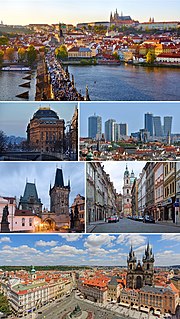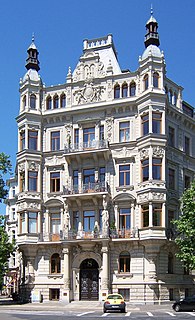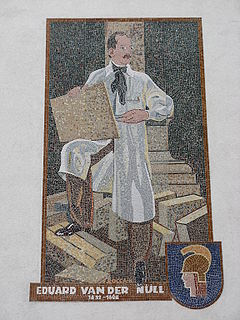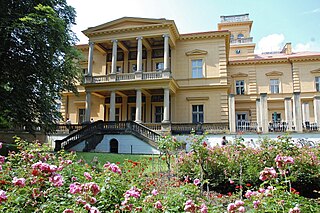
Sportovní klub Slavia Praha – fotbal, commonly known as Slavia Praha / Slavia Prague, is a Czech professional football club in Prague. Founded in 1892, they are the second most successful club in the Czech Republic since its independence in 1993.

The National Theatre in Prague is known as the alma mater of Czech opera, and as the national monument of Czech history and art.

The Generali Arena, previously, and still commonly known as Letná Stadium, is a football stadium in Prague. It is the home venue of Sparta Prague and often the home stadium of the Czech Republic national football team. It has capacity for 19,416 people.

Vrahovice is a village in the Olomouc Region of the Czech Republic, near Prostějov, founded in 1337. It is one of the seven administrative divisions of the city of Prostějov, with a population of 3,402 inhabitants, according to the 2001 census.

The National Museum (NM) is a Czech museum institution intended to systematically establish, prepare, and publicly exhibit natural scientific and historical collections. It was founded in 1818 by Kašpar Maria Šternberg. Historian František Palacký was also strongly involved in the foundation of the museum.
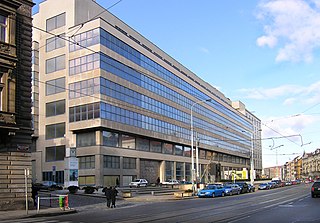
The National Gallery in Prague is a state-owned art gallery in Prague, which manages the largest collection of art in the Czech Republic. The collections of the gallery are not housed in a single building, but are presented in a number of historic structures within the city of Prague, as well as other places. The largest of the gallery sites is the Veletržní Palác, which houses the National Gallery's collection of modern art. It is one the largest museums in Central Europe.

František Bílek was a famous Czech Art Nouveau and Symbolist sculptor and architect.

František Ženíšek was a Czech painter. He was part of the "Generace Národního divadla", a large group of artists with nationalistic sympathies.

František Cína Jelínek was a Czech landscape painter.

Czech Baroque architecture refers to the architectural period of the 17th and 18th century in Bohemia, Moravia and Czech Silesia, which comprised the Crown of Bohemia and today constitute the Czech Republic.

Hotel Olympik is a large hotel in the Karlín area of the 8th district of Prague, Czech Republic. The hotel is near the housing facility Invalidovna and the stadium of Čechie Karlín. Hotel Olympik is located at 138 Sokolovská Street.

Škoda Palace is the current site of the Prague Town Hall. The late Art Deco building in Jungmannova Street was built in 1929 for the Škoda company using a design by the prominent architect Pavel Janák. The adjacent office building in Charvátova Street dates back to 1937. Even today, both buildings still satisfy the strictest requirements thanks to their flexible arrangement of office and common space within the buildings. The buildings are accessible through several entrances, which allows the interiors to be easily divided into independent sections. The Palace served as the headquarters of the ČEZ Energy Group from 1994 to 2004.

Schebek Palace, otherwise known as "The House of the Angel", is a neo-renaissance building located at Politických vězňů 7, čp. 936/II, in New Town, Prague 1. It is protected as a cultural monument in the Czech Republic.
Václav Chaloupecký was a Czech historian, a student of prominent Czech historian Josef Pekař and the main representative of historians in mid-war Slovakia.

The following outline is provided as an overview of and topical guide to Prague:
Újezd u Průhonic is a municipal district in Prague, Czech Republic.

